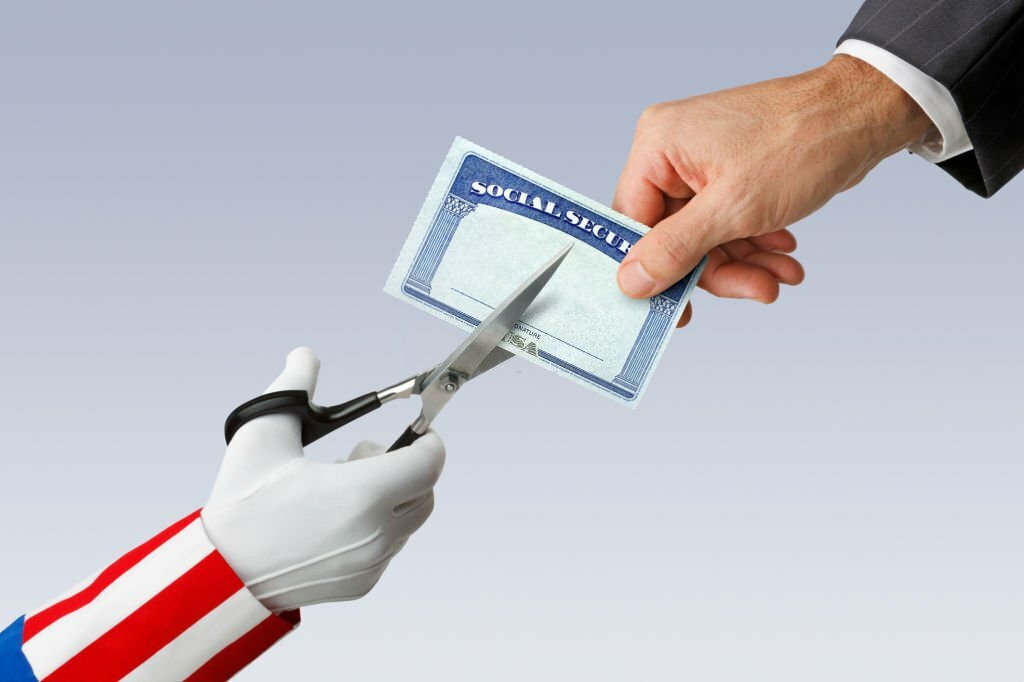[ad_1]
By Edward Sota, Kiplinger Consumer News Service (TNS)
If you feel anxious about the future of your Social Security benefits, you’re not alone.
It’s a common concern—both for retirees already receiving Social Security payments and for workers who expect to rely on this important income stream someday.
In a 2022 survey of U.S. workers by Transamerica, 37% of respondents named the potential reduction or elimination of Social Security benefits as a top retirement fear. And those worries aren’t without merit. According to the 2023 Social Security trustees report, both Social Security and Medicare face long-term financing shortfalls.
What might that mean for you? Based on the trustees’ most recent “best estimates,” the Old-Age and Survivors Insurance (OASI) Trust Fund expects to be able to pay scheduled retirement and survivor benefits on a timely basis until 2033. After that, the report states, “The fund’s reserves will become depleted, and continuing program income will be sufficient to pay 77 percent of scheduled benefits.”
In other words, it’s unlikely Social Security benefits would go away altogether. But if something isn’t done to fix the program’s funding problems in the next few years, future payments may need to be trimmed by 23%.
Even if your benefits will have only a small role in your retirement income plan, a payment reduction is (to put it mildly) an unpleasant possibility. But for those folks who rely heavily or almost entirely on their monthly Social Security benefits to make ends meet, it could be devastating.
Although Social Security was designed to provide the average retiree with about 40% of the income he or she earned before retiring, for many, the percentage is much higher. Among elderly beneficiaries, 37% of men and 42% of women receive half or more of their income from Social Security, according to the most recent data from the Social Security Administration (SSA). And 12% of men and 15% of women rely on Social Security for 90% or more of their income.
What’s being done to fix the shortfall?
The concerns raised in the 2023 report aren’t new. The trustees have been warning that a shortfall could occur in the early or mid-2030s for over a decade. And proposed fixes have floated around for years.
But, as you can imagine, Social Security’s insolvency is a tough topic for politicians to tackle without risking a backlash from voters. Remedying the program’s money woes would likely require one or more of the following actions:
- Increasing the revenue that goes to the program (by raising the payroll tax rate, for example).
- Decreasing the amount of benefits the program pays out (by once again raising the retirement age for future recipients, for instance, and/or cutting benefits).
- Raising the cap on how much of someone’s income is subject to Social Security taxes. Right now, that cap is set at $160,200.
- Increasing the taxation on Social Security benefits. Right now, depending on your income, up to 85% of your Social Security could be taxed. The government could change the minimum income that triggers the tax or increase the percentage taxed.
- Making Social Security subject to means testing. In other words, stop sending Social Security benefits to people in higher income brackets. Of course, that could result in debates about just how much income is too much to receive Social Security.
None of these options is an easy sell, which probably explains why the last major bipartisan Social Security reform took place in 1983 under President Ronald Reagan. At that time, the law raised both the payroll tax rate and Social Security’s full retirement age, albeit slowly, from 65 to 67. It also made 50% of Social Security benefits taxable for recipients who exceed a predetermined income threshold. Today, that threshold is $25,000 for an individual and $32,000 for married couples filing jointly.
A decade later, President Bill Clinton signed the Omnibus Budget Reconciliation Act, which included a provision that allowed up to 85% of Social Security benefits to be taxable when income was above a certain threshold. Today, that threshold is $34,000 for individuals and $44,000 for married couples filing jointly.
Currently, both Republican and Democratic party leaders are saying that cutting Social Security benefits is off the table. And it seems doubtful that any change would affect the benefit amount or claiming age for current or soon-to-be retirees (55 and up). So there’s no need to panic about your payment amount at this point.
Letting your emotions get the better of you can lead to sleepless nights and knee-jerk reaction—which probably isn’t good for you or your nest egg.
What can you do in the meantime to help yourself?
If you’re worried, there may be positive changes you can make now to shore up your retirement income—no matter what comes down from D.C. in the future.
If you’re already retired, these moves might include:
- Cutting costs. I know this isn’t an easy thing to ask, especially with inflation driving up the price of everything from groceries to health care. But if you revisit your budget, you may be able to be more frugal with what you spend on food, reduce some of your recurring expenses, downsize some vacation plans or hold off on big financial gifts to the kids until you’re sure you’re OK yourself.
- Getting a part-time job or side gig. If you’d like to give your income a boost, you may want to consider getting a part-time or seasonal job. Just be aware that if you haven’t yet reached your full retirement age, there are limits on how much you can earn annually before the SSA will reduce your monthly Social Security benefit amount. (The limit for 2023 is $21,240—unless you’re in the calendar year in which you’ll attain full retirement age. Then the limit is $56,520.)
- Taking another look at (or create) your overall retirement plan. If you don’t have a comprehensive, written retirement plan, you should. And if you have one, you may want to review your investment and income plans to be sure you’re still comfortable with what’s in place.
If you’re a few years away from retirement (55-plus), you also may want to consider:
- Rethinking your Social Security claiming age. You can start receiving Social Security retirement benefits as early as 62. But if you take your benefits before your full retirement age (which is based on your birth date), your payments will be permanently reduced. You may want to wait until you can get your full benefit amount — or, if you can manage it, you could delay claiming until after your full retirement age (up to age 70) and increase your monthly payments.
- Working longer. Keeping your job for a little longer than you planned can help you build your nest egg in a couple of ways. First, you’ll have more time to contribute to your workplace retirement plan (and get your employer’s matching contributions). And if you have a steady income, it’s less likely you’ll need to touch your savings, which means instead of depleting your nest egg, it can continue to grow.
- Contacting a retirement professional. If you haven’t already, this is the time to start working with a financial advisor or tax professional who can help you focus on retirement planning. An experienced retirement professional can help you transition from building your nest egg to protecting what you’ve saved. They also can help you navigate the many decisions involved with Social Security and Medicare and create an income plan that can help you weather the many changes ahead.
— Kim Franke-Folstad contributed to this article.
ABOUT THE AUTHOR
Edward Sota is a partner at Safeguard Investment Advisory Group LLC.
______
All contents copyright 2023 The Kiplinger Washington Editors Inc. Distributed by Tribune Content Agency LLC.
[ad_2]
Source link



